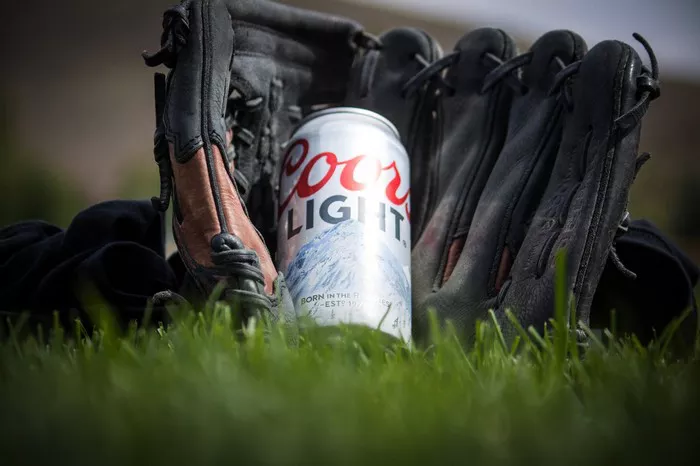In the world of beer, there’s a vast spectrum of flavors, styles, and characteristics to explore. For many, beer is a beloved beverage to unwind with after a long day or to accompany a social gathering. However, for individuals conscious of their carbohydrate intake, navigating the plethora of beer options can be a daunting task. With the rising popularity of low-carb diets and health-conscious lifestyles, the quest for beers with the least carbs has become increasingly relevant. In this comprehensive guide, we’ll delve into the intricacies of beer and uncover which varieties boast the lowest carb content.
Understanding Carbohydrates in Beer
Before we embark on our quest to discover which beers have the least carbs, it’s essential to understand the role of carbohydrates in beer production. Carbohydrates in beer primarily come from malted grains, such as barley, wheat, and rye, which are used in the brewing process to provide fermentable sugars. These sugars serve as food for yeast during fermentation, ultimately producing alcohol and carbon dioxide. However, not all carbohydrates in beer are fermented, leading to residual sugars that contribute to the beer’s flavor and body.
When it comes to determining the carb content of beer, factors such as the type of grains used, the brewing method, and any added ingredients play significant roles. Generally, beers with higher alcohol content tend to have more carbohydrates, as more sugars are needed to produce alcohol. Conversely, lighter beers, such as lagers and pilsners, typically have lower carb counts due to their lower alcohol content and simpler malt profiles.
See Also: sidecar drink history
Analyzing Beer Styles: Which Beers Have the Least Carbs
Now that we’ve laid the groundwork, let’s dive into the world of beer styles to uncover which varieties are the champions of low-carb consumption. While it’s impossible to provide an exhaustive list of every low-carb beer on the market, we can explore several categories known for their relatively low carbohydrate content.
Light Lager and Pilsner: Light lagers and pilsners are often hailed as the go-to choice for those watching their carb intake. These beers are characterized by their crisp, refreshing taste and light body, making them popular options for easy drinking. With their lower alcohol content and minimal use of specialty malts, light lagers and pilsners typically have fewer carbohydrates compared to their heavier counterparts.
Session IPA: Session India Pale Ales (IPAs) have gained traction in recent years for their approachable bitterness and lower alcohol content. Unlike traditional IPAs, which can be quite heavy on both hops and malt, session IPAs are brewed to be lighter in body and alcohol, resulting in a more balanced flavor profile. While they may contain slightly more carbs than light lagers, session IPAs still offer a relatively low-carb alternative for craft beer enthusiasts.
Wheat Beer: Wheat beers, such as hefeweizens and witbiers, are brewed with a significant portion of wheat in addition to barley. This wheat addition imparts a characteristic cloudiness and subtle sweetness to the beer. While wheat beers may have slightly higher carb counts than some other styles due to the presence of wheat sugars, they are still considered a viable option for those seeking a flavorful yet moderately low-carb beer.
Dry Stout: Contrary to popular belief, not all dark beers are high in carbohydrates. Dry stouts, exemplified by the iconic Guinness Draught, are known for their roasty flavors and dry finish. Thanks to their restrained use of specialty malts and lower alcohol content, dry stouts often have fewer carbs than their sweeter, higher-alcohol counterparts like porters and imperial stouts.
Light American Ale: Light American ales encompass a broad category of beers that are known for their balanced flavor and moderate alcohol content. While not as widely recognized as some other styles, light American ales can offer a refreshing alternative to traditional lagers and ales while still maintaining a relatively low carb count.
Navigating the Label: Deciphering Carbohydrate Information
When embarking on the quest to find beers with the least carbs, understanding how to interpret nutrition labels becomes paramount. While many beer labels may not provide detailed carbohydrate information, there are a few key indicators to look out for when selecting a low-carb brew.
Alcohol by Volume (ABV): As mentioned earlier, beers with higher alcohol content typically contain more carbohydrates, as more sugars are needed to produce alcohol. By opting for beers with lower ABV percentages, you’re likely choosing a brew with a lower carb count.
Original Gravity (OG): Original gravity refers to the specific gravity of the wort before fermentation begins and serves as an indication of the beer’s starting sugar content. While OG information may not always be readily available, beers with lower OG values tend to have fewer residual sugars and, consequently, fewer carbohydrates.
Calories: While not a direct measure of carbohydrate content, the calorie count of a beer can provide valuable insight into its overall nutritional profile. Lighter beers typically have fewer calories, which often correlates with a lower carbohydrate content.
Ingredient List: Examining the ingredient list can offer clues about the types of grains used in the brewing process. Beers brewed with simpler malt profiles and fewer adjuncts are more likely to have lower carbohydrate counts.
Conclusion
In the quest to find beers with the least carbs, navigating the diverse landscape of beer styles and deciphering nutrition labels can seem like a daunting task. However, armed with knowledge about the brewing process and key indicators of carbohydrate content, consumers can make informed choices that align with their dietary preferences and health goals. Whether you’re sipping on a light lager by the pool or enjoying a crisp session IPA with friends, there are plenty of low-carb beer options available to suit every palate. So raise a glass and toast to the delightful world of beer, where flavor knows no bounds, and carbs are merely a number on a label. Cheers!


